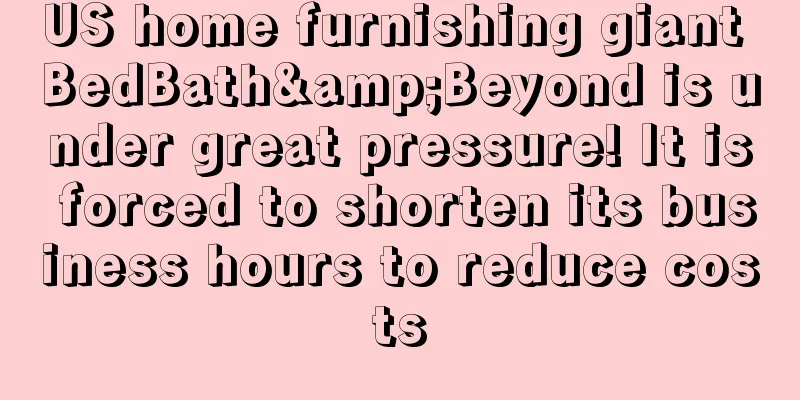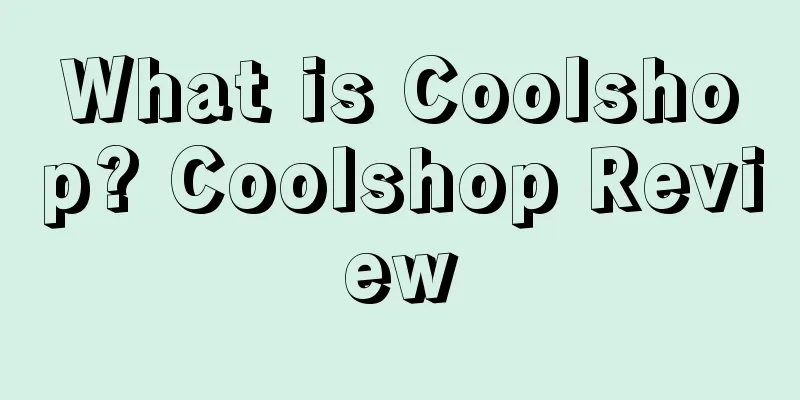Explore the successful path of private label sellers to earn tens of millions per year

|
The 996 work model has caused a sensation online recently, with many office workers complaining about their work lives. Five years ago, Greg Mercer was one of them. After graduation, he worked as a civil engineer and struggled in his nine-to-five work life. In order to escape this cramped situation, he started to open a store on Amazon and sell his own brand. Today, his store has more than 40 SKUs and annual revenue exceeds eight figures. Let's take a look at how Greg Mercer did it...
Private label products First of all, what is private label? The private label model is an e-commerce sales model in which one company owns the brand and is responsible for selling the product, but the product manufacturing is handed over to another company. These are the own brands:
In addition to physical objects, intangible assets or services such as freelance jobs, web domain names, and insurance products can also be private label products. Own brand selection If you’re interested in opening your own online store, selling your own branded products using the Amazon FBA service is the best option. Steps to finding the right private label product to sell:
1) Product selection Inspiration can happen anywhere. How does Greg Mercer select products?
These products are usually newer products that Walmart and Target don’t have in stock yet. Once he gets home, he enters the products into a product research tool to determine if they are worth selling.
Find new products by digging deeper into products within each section and subcategory, paying special attention to the Hot New Releases column; and check out other sellers’ stores and product listings to see what they are selling.
There are always some bold and innovative product ideas popular on social media, and there are many outstanding creators on Kickstarter and IndieGoGo who are using new ways to promote products. 2) Consider product features So what kind of private label products should you sell? It is recommended that new sellers purchase the following products:
3) Conduct product selection analysis Before you find a good private label product, you need to do a product selection analysis to determine whether the product is worth selling. Product selection analysis steps
So, you must be wondering which products you should research? Greg Mercer recommends looking at products that average 250-400 SKU sales per month. Also, you don’t want to be too competitive, so it’s best to look for products that average 100 or fewer reviews. 4) Research product suppliers and manufacturers The next step is to find product suppliers and manufacturers. You can find it on Alibaba, where sellers can buy wholesale or bulk products directly from overseas manufacturers. Alibaba is not only convenient and practical, but also very safe, and all suppliers are strictly controlled. Basic steps to find potential suppliers on Alibaba:
Send a message to the product supplier/manufacturer to learn more about the product. Usually you need to ask the following questions:
It is best to shop around and order a product sample from each of 3-5 suppliers to compare the results. The following are sample inquiries:
5) Design product logo and packaging Private label sellers can put their own logo on the packaging and the product itself. If you are new to design, you can hire a professional designer to help you design a logo. It is best if your design is unique so that it can stand out more easily. In addition, you don’t need to be a professional to customize your products. Customizing products is actually very simple, and sometimes you only need to change the color of the product. Provide quality packaging whenever possible. Thoughtful packaging of your product can improve the customer experience. Additionally, you can add your brand’s website, useful information, etc. to your packaging. 6) Choose logistics and delivery The above are just the necessary conditions for opening a store. You also need to get the products to your customers, which requires you to choose a logistics delivery service. Some people choose to ship the goods themselves, while others use a third party to fulfill the order. It is recommended that private label sellers choose the FBA logistics service provided by Amazon. Not only can you get 2.5 billion Amazon consumers visiting every month, but Amazon can also ship and handle the goods for you. All you have to do is hand over the inventory to Amazon. 7) Identify cooperative manufacturers At this step, you need to carefully choose the manufacturer you are going to work with. You can compare the speed of sample delivery from each manufacturer, the condition of the samples when they arrive, and the manufacturer's communication during logistics and transportation to determine the manufacturer you will finally cooperate with. These factors are often more important than product cost. Note: Try not to work with manufacturers with the lowest product costs. Although private label sellers all hope for lower costs, the lowest cost is not necessarily the best option. It is recommended that sellers choose manufacturers with better customer service and faster delivery, and the product price can be negotiated. After you have chosen a supplier, you need to arrange payment. Most suppliers accept payment via PayPal or Ali Credit Guarantee Service. 8) Create product listing It takes about 3-4 weeks for manufacturers to produce products, and another 1-2 weeks to ship to sellers or the nearest Amazon logistics center. These 4-6 weeks are the best time for sellers to create product listings. Before creating your product listing, make sure you have completed the above steps. Steps to create a product listing:
The more your product meets a consumer need, the more likely they are to buy it. 9) Optimize product listings and increase product sales After setting up your product listing, it is recommended to run Amazon on-site advertising - PPC advertising, which is the best way to attract consumers' attention to your private label products. You can bid on Sponsored Ads, which can make your products appear on the first page of search results, in remarketing ads outside of Amazon, and even on competitor product pages. Through the reports in Amazon Seller Central, you can find keywords that convert effectively to help you determine the keywords to bid on in your PPC ads. Additionally, you can use Jungle Scout’s keyword research tool to see what keywords your competitors are using. If you are familiar with the Amazon PPC and sales process, you can use other tools to A/B test the effectiveness of multiple elements in your product listing to see which keywords are effective. It is best to change only one variable each time you perform an A/B test. You can use software like Splitly to help you understand keyword effectiveness. At first, your ads may not convert as well as you thought, but after a few weeks of adjusting your keywords and bids, your sales could double or even triple. How to price private label products How to effectively price products on Amazon? Most novice sellers take it for granted that the lower the product price, the better. In fact, this is a very wrong idea. Greg Mercer rarely adopts the strategy of pricing products lower than competitors, but instead uses other means to leave competitors far behind. According to Godin's marketing theory in Purple Cow : create a different and unique product and find the right target group. Therefore, he:
However, as a rule of thumb, you should still keep your product pricing within 20% of your competitors’. For example, if the market price of a product is around $25, your product price should be between $20-30. In addition, private label sellers should try to sell products priced between $20 and $50 on Amazon. If the product is priced below $20, there is almost no profit after deducting product costs and advertising expenses; but if it is over $50, the conversion rate of the product is not high, and you will be scolded if you receive bad reviews. Who told you to sell more expensively than others and your products are not as good as others? Private Label Pricing Examples in 2019 Here are some examples of pricing private label products using the above ideas and methods. You can see the metrics for various products in the graph, which is a feature of the Jungle Scout Chrome extension Pro. Of course, examples can only be other people's examples. The market may change at any time, so you must do your own research. Example: 1 Homeschool Planner 2 Funny Hat
3 Copper Measuring Cup
The sales volume exploded in 7 months. This hot seller has something to tell you. Is Amazon right for you? To do business on Amazon, sellers must have these information and skills! How to choose the Amazon sales model that suits you 15 Reasons Why Your Amazon Account May Be Blocked Amazon Product Selection: How to Find Products That Sell Well When doing business on Amazon, be careful to avoid these traps A Brand Seller’s Guide to Amazon Business Strategy Take over the Buy Box, the battleground for sellers, in five minutes Amazon e-commerce tycoon shares his experience, why not save it? 2019 Amazon SEO Optimization Reference Guide How to think about Amazon Listing optimization from the buyer’s perspective? Text ✎ Mary/ Statement: When reprinting this article, the title and original text must not be modified, and the source and original link must be retained. |
<<: How to think about Amazon Listing optimization from the buyer’s perspective?
>>: If you don’t do these four things well, Amazon’s business will be just a paper operation
Recommend
What is HookLogic? HookLogic Review
HookLogic is a performance marketing trading platf...
What is Privalia? Privalia Review
Privalia is the No. 1 online fashion exporter in S...
Ranked as the No. 1 port in the United States for 22 consecutive years! The container handling volume of the Port of Los Angeles set a record in March!
<span data-shimo-docs="[[20,"连续22年稳居美国第一港!...
The US is about to give out a lot of money! Is Amazon making too much money causing public outrage?
Yesterday, the U.S. House of Representatives pass...
Internal competition has been upgraded! Amazon’s “refund only” mode is launched!
Not long ago, Amazon held a closed-door meeting i...
What is Czech VAT registration? Czech VAT registration review
VAT is the abbreviation of Value Added Tax, which ...
What is the Japanese National Tax Agency? Review of the Japanese National Tax Agency
The National Tax Agency (Japanese: 國税庁/こくぜいちょう, En...
What is Shenzhen Yishuitong Finance and Taxation Service Center? Shenzhen Yishuitong Finance and Taxation Service Center Review
Shenzhen Easy-Tax Services Center is a company tha...
Amazon is preparing a cleanup plan! It will affect tens of thousands of people
Since the 525 store closure incident, Amazon’s cr...
Delete negative review contact template (absolutely useful)
On the bloody Amazon platform, no matter you are ...
What is the Dongguan City Trademark Brand Strategy Special Fund Management Measures? Dongguan City Trademark Brand Strategy Special Fund Management Measures Evaluation
In order to implement the trademark brand strategy...
What is Shenzhen Mengbang Import and Export Supply Chain Co., Ltd.? Shenzhen Mengbang Import and Export Supply Chain Co., Ltd. Review
Shenzhen Mengbang Import and Export Supply Chain C...
Which one is better, Amazon vc or Amazon ve?
Amazon’s common seller accounts are mainly divide...
What is Soolve? Soolve Review
Soolve is a very interesting text cloud integratio...
Amazon will hire 150,000 employees to cope with the holiday shopping season! Second recruitment in one month!
Amazon said on Monday that it will hire 150,000 se...









